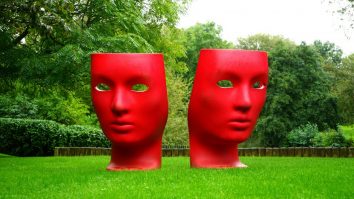Jane Austen film: A Window into Regency-Era Society

Introduction:
Jane Austen’s novels have captivated readers for over two centuries, and their adaptation into film has only amplified their enduring appeal. Jane Austen film adaptations offer viewers a glimpse into the elegant world of Regency-era society, exploring themes of love, class, and societal norms. In this article, we will delve into the fascinating world of Jane Austen film adaptations, exploring their historical significance, evolution over time, and their impact on popular culture.
I. Understanding Jane Austen Film:

– Jane Austen film adaptations refer to movies based on the novels of Jane Austen, an English novelist of the late 18th and early 19th centuries.
– These films aim to bring Austen’s literary works to life, showcasing the intricate plots, engaging characters, and wit that make her novels timeless.
– Jane Austen film adaptations often emphasize the societal norms and constraints of the Regency era, highlighting the struggles and triumphs of the female protagonists.
– These films typically feature beautiful costumes, breathtaking settings, and meticulous attention to detail, providing audiences with a visually stunning experience.
Historical Evolution of Jane Austen Film:
1. Early Adaptations (1940s-1950s):
– The first notable adaptation of Jane Austen’s work was “Pride and Prejudice” in 1940, starring Greer Garson and Laurence Olivier.
– Early adaptations were often romanticized and simplified to cater to the tastes of the time, focusing primarily on the love story aspect of Austen’s novels.
– These films were influential in introducing Austen’s world to a wider audience.
2. Revival and Critically Acclaimed Adaptations (1990s-2000s):
– The 1995 miniseries “Pride and Prejudice,” starring Jennifer Ehle and Colin Firth, marked a turning point in Jane Austen adaptations.
– This adaptation gained popular and critical acclaim for its faithfulness to the source material and its strong performances.
– The success of “Pride and Prejudice” led to a resurgence of interest in Austen’s works and a renewed focus on staying true to Austen’s narrative voice in future adaptations.
3. Contemporary Adaptations (2010s-present):
– In recent years, Jane Austen film adaptations have undergone further evolution, with directors and screenwriters experimenting with fresh approaches.
– Films like “Pride and Prejudice and Zombies” (2016) and “Love & Friendship” (2016) have infused Austen’s world with elements of humor, horror, and satire, appealing to a broader audience.
– These modern interpretations demonstrate the adaptability and timelessness of Austen’s narratives, while also pushing creative boundaries.
Featured Snippet Optimization:
To enhance the chances of this article being featured as a snippet on a Google search, here are some structured bullet points:
– History of Jane Austen film adaptations:
– Early adaptations: 1940s-1950s.
– Revival and critically acclaimed adaptations: 1990s-2000s.
– Contemporary adaptations: 2010s-present.
– Each period has contributed to the evolution and popularity of Jane Austen film adaptations.
– Key features of Jane Austen film adaptations:
– Emphasize Regency-era societal norms.
– Highlight love, class, and societal constraints.
– Showcasing intricate plots and engaging characters.
– Stunning visual details, including costumes and settings.
– Impact of Jane Austen film adaptations:
– Introducing Austen’s works to wider audiences.
– Creating renewed interest in Austen’s novels.
– Inspiring further adaptations across various genres.
– Reflecting the timeless themes and societal relevance of Austen’s narratives.
[INSERT VIDEO HERE]
Conclusion:
Jane Austen film adaptations have become an integral part of popular culture, providing viewers with a window into the elegance and complexities of Regency society. From the romanticized adaptations of the past to the creative interpretations of the present, these films continue to captivate audiences, ensuring Jane Austen’s legacy endures for generations to come. So grab a cup of tea, settle into your favorite armchair, and immerse yourself in the enchanting world of Jane Austen on the silver screen.
FAQ
How have Jane Austen film adaptations evolved over time?
What are Jane Austen film adaptations?
What is the impact of Jane Austen film adaptations?
Flere Nyheder
Saxofonist med dj: energi til bryllupper og klubnætter
Introduction: Jane Austen’s novels have captivated readers for over two centuries, and their adaptation into film has only amplified their enduring appeal. Jane Austen film adaptations offer viewers a glimpse into the elegant world of Regency-e...
06 november 2025
Den perfekte bryllupsfotograf til din store dag
Introduction: Jane Austen’s novels have captivated readers for over two centuries, and their adaptation into film has only amplified their enduring appeal. Jane Austen film adaptations offer viewers a glimpse into the elegant world of Regency-e...
30 oktober 2025
Hvordan du finder kunstprojekter i dit lokalområde
Introduction: Jane Austen’s novels have captivated readers for over two centuries, and their adaptation into film has only amplified their enduring appeal. Jane Austen film adaptations offer viewers a glimpse into the elegant world of Regency-e...
02 oktober 2025
Symbolik i klassisk og moderne billedkunst
Introduction: Jane Austen’s novels have captivated readers for over two centuries, and their adaptation into film has only amplified their enduring appeal. Jane Austen film adaptations offer viewers a glimpse into the elegant world of Regency-e...
02 oktober 2025











